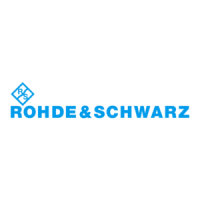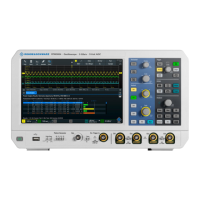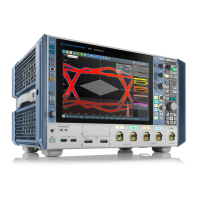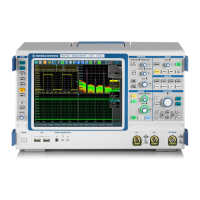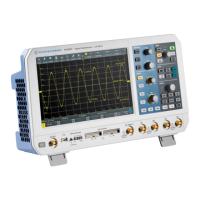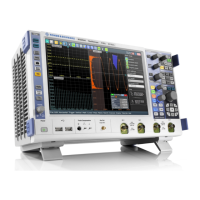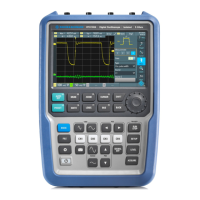Search
R&S
®
RTM20xx
136User Manual 1317.4726.02 ─ 01
Search
Enables and disables the search mode.
Remote command:
SEARch:STATe on page 359
Search type
Selects the event you want to search for.
"Edge"
Similar to the edge trigger, an edge search result is found when the
waveform passes the given level in the specified direction.
For settings, see chapter 10.3.2, "Edge Setup", on page 137.
"Width"
Similar to the width trigger, a width search finds pulses with an exact
pulse width, or pulses shorter or longer than a given time, or pulses
inside or outside the allowable time range.
For settings, see chapter 10.3.3, "Width Setup", on page 138
"Peak"
The peak search finds pulses exceeding a given amplitude.
For settings, see chapter 10.3.4, "Peak Setup", on page 139
"Rise/Fall time"
The rise or fall time search finds slopes with an exact rise or fall time,
or rise/fall times shorter or longer than a given limit, or rise/fall times
inside or outside the allowable time range.
For settings, see chapter 10.3.5, "Rise/Fall Time Setup",
on page 139
"Runt"
The runt search finds pulses lower than normal in amplitude. The ampli-
tude crosses the first threshold twice without crossing the second one.
In addition to the threshold amplitudes, you can define a time limit for
the runt in the same way as for width search: runts with exact width,
shorter or longer than a given time, or runts inside or outside the allow-
able time range.
For settings, see chapter 10.3.6, "Runt Setup", on page 141
"Data2Clock"
The Data2Clock search - also known as setup/hold - finds violation of
setup and hold times. It analyzes the relative timing between two sig-
nals: a data signal and the synchronous clock signal.
Many systems require, that the data signal must be steady for some
time before and after the clock edge. Setup time is the time that the data
signal is steady before clock edge. Hold time is the time that the data
signal is steady after clock edge.
For settings, see chapter 10.3.7, "Data2Clock Search", on page 142.
"Pattern"
The pattern search finds logical combinations of channel states inside
or outside a specified time range. For each channel, its state and
threshold level is defined. The states are combined logically, and the
time of true pattern results is compared with a specified time range.
For settings, see chapter 10.3.8, "Pattern Search", on page 144.
Reference for Search Menu
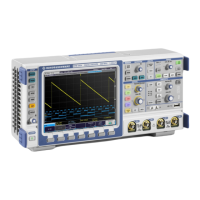
